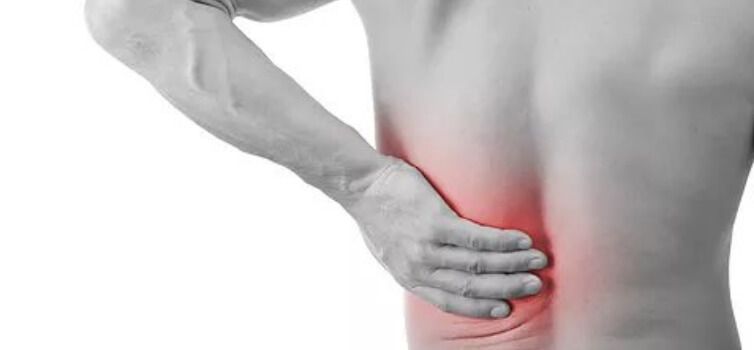If you have ever seen your doctor for low back pain, you have likely been advised to rest, ice the affected area, and take Ibuprofen to reduce the inflammation. If the issue does not resolve, you may have imaging done (X-ray or MRI) and if severe enough, an orthopedic surgeon may recommend steroid injections or surgery. While these measures are necessary in some situations and may provide temporary relief, Functional Medicine looks at the underlying source of dysfunction, as the back pain itself may represent a symptom of a deeper biochemical or structural dysfunction.
Calcium Regulation and Bone Health
When thinking about musculoskeletal pain, it is important to consider our bone health at a biochemical level. Bone health has a lot to do with regulation of calcium, we need to be able to get calcium into the blood (Vitamin D), then into the bones and keep calcium out of the arteries (Vitamin K2). Studies show that low Vitamin D is associated with chronic back pain(1,2), Vitamin K deficiency is associated with arthritis(3) and supplementation of Vitamin D and K increases bone mineral density(4).
Structural Balance
Low back pain is often the final manifestation of years of structural imbalance. People who lack stability, mobility, balance, and flexibility in their ankles, knees, and hips may ultimately develop low back pain due to structural imbalances that cause the low back to bear excessive or unevenly distributed force. For example, this article explains how tight hip flexors can cause low back pain.
Inflammation
Inflammation is an adaptive mechanism that our body has to deal with infection and diseased tissue. When diseased tissue is identified by the body, an acute inflammatory response ensues that cleans up the diseased tissue in order to rebuild healthy tissue in its place. However, if there is a chronic infection or source of inflammation within the body, the inflammatory itself becomes problematic. If there is systemic inflammation, the body will break down at its weakest point, which for many is the low back.
One of the major controllers of systemic inflammation is the presence of Essential Fatty Acids. For the most part, Omega-3 fatty acids create molecules that are anti-inflammatory and Omega-6 fatty acids create molecules that are pro-inflammatory, thus the overall balance is determined by the ratio of the two.
Emerging research shows that essential fatty acids create a class of molecules called Specialized Pro-resolving Mediators (SPMs) that are directly responsible for resolving the current inflammatory cycle and returning to hemeostasis. This is one of the big differences between NSAIDs, which shut off the pro-inflammatory cascade from starting, and Essential Fatty Acids, which stimulate SPMs to actually resolve the inflammation that is currently there. Research shows that direct supplementation of these SPMs can reduce objective and subjective markers of inflammation.(5)
Gastrointestinal
When looking at the source of systemic inflammation, the answer is often found in the gastrointestinal system. Gastrointestinal hyperpermeability (aka leaky gut syndrome) may actually lead to systemic inflammation. Gastrointestinal hyperpermeability leads to undigested food peptides leaking into the circulation, which causes a subclinical autoimmune and systemic inflammatory reaction. Sometimes we are able to identify specific food sensitivities in which the body has already developed an immune response towards, and elimination of these foods results in reduction of pain or whatever the sensitivity may present as.
Dealing with depression and anxiety
Sometimes, low back pain is actually more an issue with a person’s nervous system than the back itself. Depression and anxiety directly affect how the brain perceives pain and studies show that treating depression and anxiety often reduces pain and improves quality of life. Studies also show that optimistic people have better pain tolerance than pessimistic people, showing the direct affect of the mind on pain.(6)
Hormones and Neurotransmitters
Sex hormones also have affects on inflammation other than their physiologic roles in the reproductive system. For example, women who are estrogen-dominant (i.e. have a high estrogen-to-progesterone ratio) tend to have more pain because estrogen is pro-inflammatory and progesterone is the balancing anti-inflammatory female sex hormone. Men who have low testosterone who are given replacement therapy show decreases in their inflammatory markers.(7)
Adrenal fatigue can also contribute to low back pain. Cortisol is a potent anti-inflammatory molecule. Thus when we exhaust our cortisol reserves due to chronic stress, this has an inflammatory effect, which can be the cause of musculoskeletal pain.
One of the most inflammatory hormones in the body is insulin. High levels of insulin and chronic high blood sugar results in high oxidative stress, which can result in muskuloskeletal pain. Additionally, insulin resistance and obesity itself will put stress on the low back and predispose to injury and chronic pain.
For an individualized, root-cause approach to your chronic low back pain, seek out the local Functional Medicine practitioner in your area.
References:
2. Pain Physician. 2013 Mar-Apr;16(2):165-76.
4. J Orthop Sci. 2000;5(6):546-51.

